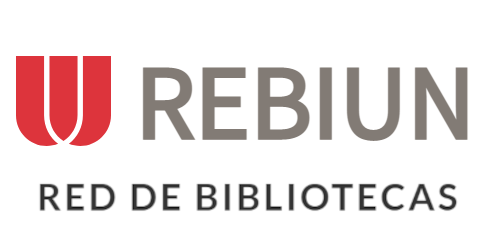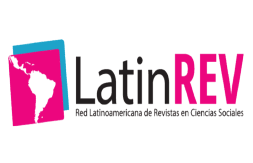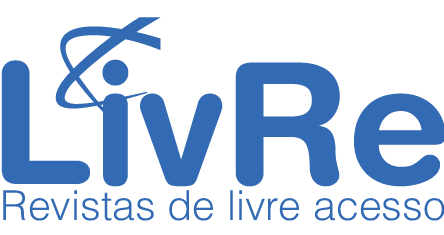Advanced reconstructive techniques for surgical management of extensive skin defects due to post-burn scarring: a systematic review
DOI:
https://doi.org/10.69639/arandu.v11i2.419Palabras clave:
reconstructive techniques, skin burns, post-burn scaring, advancements, scar managementResumen
Recent advancements in reconstructive techniques for burn-induced skin defects have improved functional and aesthetic outcomes to enhance life quality of burn survivors. A wide range of innovative methods such as flap surgeries advancements or laser therapies and tissue expansion techniques are now available in the markets and their use has been widely explored for management of extensive post-burn scarring. According to studies the use of latest technological innovations and microvascular free tissue transfer, Z-plasty and trapeze flaps have excellent success rates for contracture release, scar reduction, and functional restoration. Laser treatments that have shown promise in decreasing scar thickness and increasing suppleness include stromal vascular fraction therapy and CO2 fractional lasers. There remain persisting issues like limited long-term data, expense, and technical complexity. In order to evaluate the clinical effectiveness, drawbacks, and potential future directions of these reconstructive techniques in burn care, this review summarizes recent research.
Descargas
Citas
Fattah, J. H. (2022). Reconstruction of Post-burn Hand Contractures with Trapeze Flap and Evaluation of the SDF1 Gene Expression. Cellular and Molecular Biology, 68(4), 170–177. https://doi.org/10.14715/cmb/2022.68.4.20
Dastagir, K., Obed, D., Bucher, F., Hofmann, T., Koyro, K. I., & Vogt, P. M. (2021). Non-Invasive and Surgical Modalities for scar Management: a Clinical algorithm. Journal of Personalized Medicine, 11(12), 1259. https://doi.org/10.3390/jpm11121259
Bogdanov, S. B., Gilevich, I. V., Melkonyan, K. I., Sotnichenko, A. S., Alekseenko, S. N., & Porhanov, V. A. (2020). Total full-thickness skin grafting for treating patients with extensive facial burn injury: A 10-year experience. Burns, 47(6), 1389–1398. https://doi.org/10.1016/j.burns.2020.12.003
Bhandari, P. S., & Singh, S. (2020). Tips and tricks of temporo-parietal fascial flap in post burn ear reconstruction. Burns Open, 4(4), 146–152. https://doi.org/10.1016/j.burnso.2020.08.002
Issler-Fisher, A. C., Fisher, O. M., Haertsch, P. A., Li, Z., & Maitz, P. K. (2020). Effectiveness and safety of ablative fractional CO2 laser for the treatment of burn scars: A case-control study. Burns, 47(4), 785–795. https://doi.org/10.1016/j.burns.2020.10.002
Brewin, M., Hijazi, Y., Pope-Jones, S., Exton, R., & Khan. (2020). Free tissue transfer for burns reconstruction: A single-site experience. Burns, 46(7), 1660–1667. https://doi.org/10.1016/j.burns.2020.04.001
Ma, Z., Mo, R., Chen, C., Meng, X., & Tan, Q. (2021). Surgical treatment of joint burn scar contracture: a 10-year single-center experience with long-term outcome evaluation. Annals of Translational Medicine, 9(4), 303. https://doi.org/10.21037/atm-20-4947
Miletta, N., Siwy, K., Hivnor, C., Clark, J., Shofner, J., Zurakowski, D., Anderson, R. R., Lee, K., & Donelan, M. (2019). Fractional Ablative Laser Therapy is an Effective Treatment for Hypertrophic Burn Scars. Annals of Surgery, 274(6), e574–e580. https://doi.org/10.1097/sla.0000000000003576
Roohaninasab, M., Khodadad, F., Sadeghzadeh-Bazargan, A., Atefi, N., Zare, S., Jafarzadeh, A., Rahimi, S. T., Nouri, M., Nilforoushzadeh, M. A., Behrangi, E., & Goodarzi, A. (2023). Efficacy of fractional CO2 laser in combination with stromal vascular fraction (SVF) compared with fractional CO2 laser alone in the treatment of burn scars: a randomized controlled clinical trial. Stem Cell Research & Therapy, 14(1). https://doi.org/10.1186/s13287-023-03480-8
Legemate, C. M., Kwa, K. a. A., Goei, H., Pijpe, A., Middelkoop, E., Van Zuijlen, P. P. M., Beerthuizen, G. I. J. M., Nieuwenhuis, M. K., Van Baar, M. E., Van Der Vlies, C. H., Dokter, J., Gardien, K. L. M., Hiddingh, J., Hofland, H. W. C., Lucas, Y., Vries, A. M., Nijhuis, T. H. J., Oen, I. M. M. H., Roodbergen, D. T., . . . Trommel, N. (2021). Hydrosurgical and conventional debridement of burns: randomized clinical trial. British Journal of Surgery, 109(4), 332–339. https://doi.org/10.1093/bjs/znab470
Bergus, K. C., Iske, T., Fabia, R., Schwartz, D., & Thakkar, R. K. (2024). Impact of laser treatment on hypertrophic burn scars in pediatric burn patients. Burns, 50(7), 1863–1870. https://doi.org/10.1016/j.burns.2024.04.010
Alsaif, A., Karam, M., Hayre, A., Abul, A., Aldubaikhi, A., & Kahlar, N. (2022). Full thickness skin graft versus split thickness skin graft in paediatric patients with hand burns: Systematic review and meta-analysis. Burns, 49(5), 1017–1027.
https://doi.org/10.1016/j.burns.2022.09.010
Yoshino Y, Kubomura K, Ueda H, Tsuge T, Ogawa R. Extension of flaps associated with burn scar reconstruction: A key difference between island and skin-pedicled flaps. Burns [Internet]. 2017 Oct 28;44(3):683–91. Available from:
https://www.sciencedirect.com/science/article/abs/pii/S0305417917305053
Carolina S, Jimena D, Adriana A, Ekaterina T, José HM, Diego G, et al. The introduction of microvascular free tissue transfer in primary burn reconstruction. Experience report of the national burn center in Chile. Burns Open [Internet]. 2024 Mar 28;8(3):169–74. Available from: https://www.sciencedirect.com/science/article/pii/S2468912224000221
Xirui Tong, Jianyu Lu, Wei Zhang, Siqiao Wang, Runzhi Huang, Xianliang Zhang, Jie Huang, Yushu Zhu, Shichu Xiao, Shizhao Ji, Zhaofan Xia, Efficacy and safety of external tissue expansion technique in the treatment of soft tissue defects: a systematic review and meta-analysis of outcomes and complication rates, Burns & Trauma, Volume 10, 2022, tkac045, https://doi.org/10.1093/burnst/tkac045
Stekelenburg CM, Jaspers MEH, Jongen SJM, Baas DC, Gardien KLM, Hiddingh J, et al. Perforator-Based interposition flaps perform better than Full-Thickness grafts for the release of burn scar contractures: a multicenter randomized controlled trial. Plastic & Reconstructive Surgery [Internet]. 2017 Feb 1;139(2):501e–9e. Available from: https://pubmed.ncbi.nlm.nih.gov/28121892/
Blome-Eberwein SA, Schwartz A, Ferdock M, Starner S, Gogal C. Minimally invasive burn reconstruction with subcutaneous scar contracture release. Burns [Internet]. 2024 Mar 22;50(6):1597–604. Available from:
https://www.sciencedirect.com/science/article/abs/pii/S0305417924000949
Goel, A., & Shrivastava, P. (2010). Post-burn scars and scar contractures. Indian Journal of Plastic Surgery, 43(3), 63. https://doi.org/10.4103/0970-0358.70724
Van Baar, M. E. (2020). Epidemiology of scars and their consequences: burn scars. In Springer eBooks (pp. 37–43). https://doi.org/10.1007/978-3-030-44766-3_5
Futran, N. D., Wadsworth, J. T., Villaret, D., Farwell, D. G., Genden, E. M., Wallace, D., & Buchbinder, D. (2002). Head and neck reconstruction. Br J Oral Maxillofac Surg, 40, 183-190.
Kolimi, P., Narala, S., Nyavanandi, D., Youssef, A. A. A., & Dudhipala, N. (2022). Innovative treatment strategies to accelerate wound healing: trajectory and recent advancements. Cells, 11(15), 2439.
Varkey, M., Visscher, D. O., Van Zuijlen, P. P. M., Atala, A., & Yoo, J. J. (2019). Skin bioprinting: the future of burn wound reconstruction? Burns & Trauma, 7. https://doi.org/10.1186/s41038-019-0142-7
Ataide, J. A., Zanchetta, B., Santos, É. M., Fava, A. L. M., Alves, T. F. R., Cefali, L. C., Chaud, M. V., Oliveira-Nascimento, L., Souto, E. B., & Mazzola, P. G. (2022). Nanotechnology-Based dressings for wound management. Pharmaceuticals, 15(10), 1286. https://doi.org/10.3390/ph15101286
Publicado
Cómo citar
Número
Sección
Licencia
Derechos de autor 2024 Génesis Karolina Huilca Villalba , Fernanda Ximena Castro Ibáñez , Any Yareli Diaz Carbajal , Sebastián David Portilla Muñoz, Adlay Jambick Cuello Carranza, Jaret Damar Ruiz Rodriguez , José Javier Alvarez Arroyo

Esta obra está bajo una licencia internacional Creative Commons Atribución 4.0.





















